Camera for Taking Pictures of Wildlife: Learn What Features Your Digital Camera Should Have
Best Type of Camera
Many will agree that a SLR (single lens reflex) camera is best if one is serious about taking wildlife pictures mainly because it has the ability to allow you to stand further away from your subject. However, SLRs are quite expensive, bulky and a bit more complicated. Therefore, this article will focus on the best features to have with a fixed-lens digital camera for taking pictures of wildlife.
Features
Optical Zoom
When taking pictures of wildlife, a high optical zoom lens is necessary to capture many animals in the wild. You will want to be able to stand far away to keep from startling your subject and to protect yourself from aggressive animals as well as to capture those you can not get near like a bird sitting high in a tree.
Digital zoom is different from optical zoom. Optical actually zooms in on the subject, like a telephoto lens on a SLR camera. Digital basically crops and enlarges a portion of the picture to bring the subject in closer, causing the image to lose quality. This is the same kind of effect you would have if you were to enlarge a picture beyond its normal size on a photo editing program like Paint Shop Pro.
Megapixel
A camera with a high megapixel can also allow you to get close ups of wildlife. The higher the megapixel, the larger your image will be without losing quality. Therefore, you can crop your picture to focus on your subject without having to enlarge it afterwards to get a decent size photo.
Macro
This feature allows you to stand just inches away from your subject to get a close up. Without it, you would have to stand about a couple of feet or more away to capture a clear shot. This feature is especially handy when taking pictures of small subjects like bugs.
Below Pictures: butterfly (using optical zoom), owl (using digital zoom), cicada (using macro) - click on images to enlarge
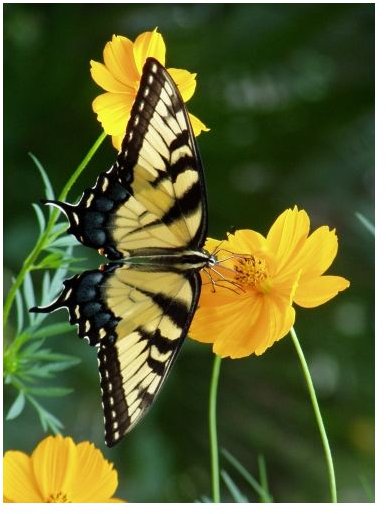
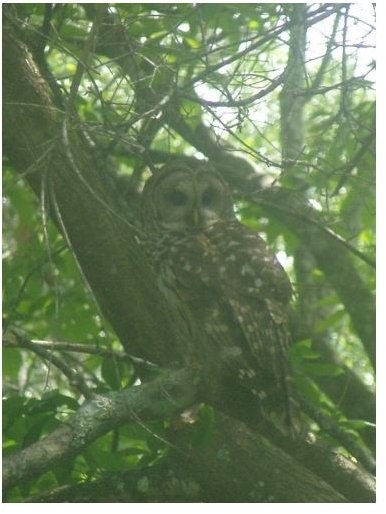

ISO
In nature you can not control lighting like you can in a studio. The ISO (International Organization for Standardization) setting allows you to set the camera’s sensor to light. If your subject is in bright light, you can adjust the ISO to a low number and if your subject is in low-light, you will want to use a higher number. This can come in handy when flash is inappropriate. Flash can sometimes cause an unflattering picture, scare off your subject or not even reach your subject.
Shutter Speed
This feature is great to have when taking photos of wildlife. You can control how long the shutter stays open while capturing a photo. A slow shutter speed (the longer it stays open) catches motion and a fast shutter speed freezes motion.
Aperture
The aperture is how wide the shutter opens. This is another wonderful feature to have because you can control the depth of field (DOF). DOF is the distance from the foreground of the image to the background. Using a decreased DOF (a wide opening like f/2) will blur the surrounding area around your subject, bringing attention to that particular animal. Using a increased DOF (a narrow opening like f/22) will give a clear shot of the surroundings around your subject.
Do note, the shutter speed and aperture basically work together. A fast shutter speed allows little light to enter so a wide aperture is needed to allow more light in. A slow shutter speed allows a lot of light to enter so a narrow aperture is needed to allow little light in. Choose your priority of one feature and your digital camera will take care of the other.
Below Pictures: butterflies (using a slow shutter speed), butterfly in flight (using a fast shutter speed)
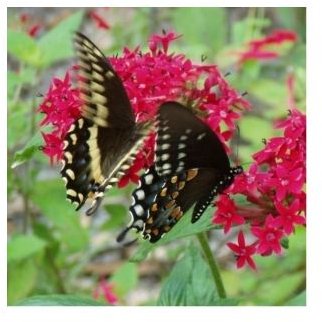

All photos on this page was taken by the author.
Nikon Coolpix P90
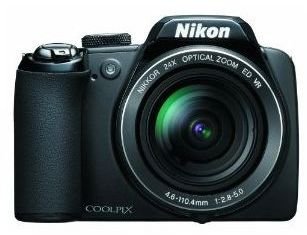
This high performance compact camera can be found at Amazon for the price of $449.99 (on 2-8-11). Some of the many features it has to offer include 24x optical zoom (the maximum focal length equivalent to a 35mm lens on a SLR is 624mm), 12.1 megapixel (you can print high quality pictures up to 20 x 30 inches), macro mode, ISO control, shutter priority and aperture priority. The Nikon Coolpix P90 is 3.3 inches in height, 4.53 inches in width and weighs 16.2 ounces. It is a bit on the pricey side but it is a great camera to have if you are wanting to take pictures of wildlife from far distances.
Nikon Coolpix L100
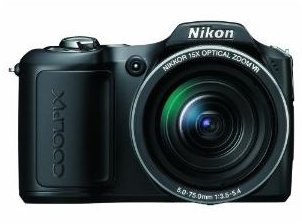
This Nikon is lower in price but it does not offer shutter priority or aperture priority. However, it has a 15x optical zoom (the maximum focal length equivalent to a 35mm lens is 420mm) and it is 10.0 megapixels (you can print high quality pictures up to 16 x 20 inches). It does offer macro mode and ISO controls. The Nikon Coolpix L100 is 2.8 inches in height, 4.3 inches in width and weighs 12.5 ounces. You can buy this digital camera at Amazon for $247.99 (on 2-8-11).
Kodak EasyShare Z950
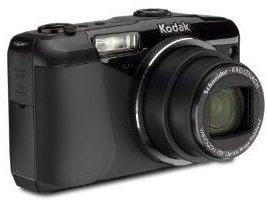
The Kodak EasyShare Z950 is about the same price as the Nikon Coolpix L100 but not only does it have shutter speed priority and aperture priority, as well as macro mode and ISO control, it is 12.0 megapixels. However, it only has a 10x optical zoom (the maximum focal length equivalent to a 35mm lens is 350mm). This is still a good zoom for capturing pictures of wildlife and as mentioned on page one, the high megapixel allows you to crop it to close in on your subject to create a decent size photo without having to enlarge it. This camera is 2.6 inches in height, 4.3 inches in width and weighs 8.2 ounces. It sells for $253.88 at Amazon (on 2-8-11).
Kodak EasyShare M575
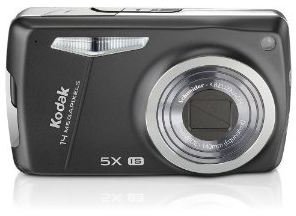
If you do not wish to spend much money on a digital camera for taking pictures of wildlife but still want to capture good shots, this camera may be right for you. It only costs $89.95 at Amazon (on 2-8-11). It has a 5x optical zoom (the maximum focal length equivalent to a 35mm lens is 140mm) and is 14 megapixels (you can print high quality pictures up to 30 x 40 inches). It also offers macro mode, ISO control and shutter speed control. The Kodak EasyShare M575 is 2.3 inches in height, 3.9 inches in width and weighs 4.6 ounces.
References
https://store.kodak.com/store/ekconsus/en_US/pd/Z950_Digital_Camera/productID.156586400
https://store.kodak.com/store/ekconsus/en_US/pd/M575_Digital_Camera/productID.169225300
All camera images courtesy of Amazon.com